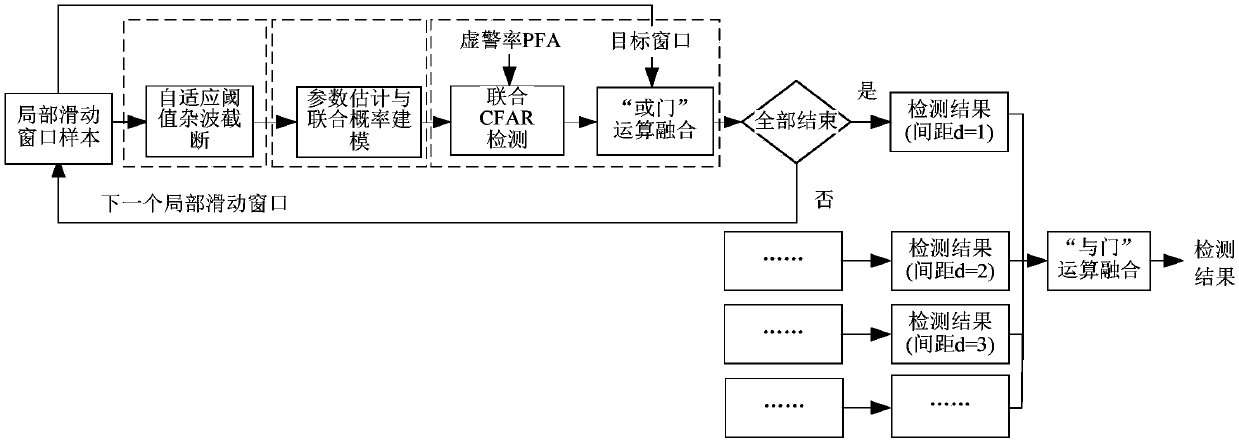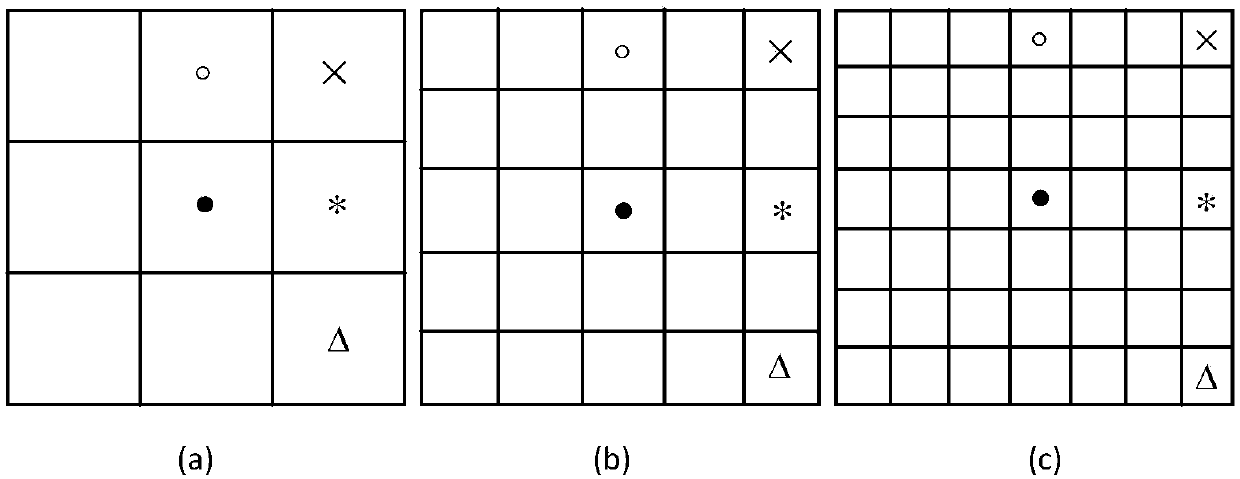CFAR detection method based on gray correlation characteristics in multi-target environment
A technology with related characteristics and detection methods, applied in instruments, character and pattern recognition, scene recognition, etc., can solve problems such as difficulty in taking into account high detection rate and low false alarm rate, insufficient exploration of space-related information, and false alarms in detection results. , to achieve the effect of ensuring the target detection rate, solving the detection rate reduction, and reducing the false alarm rate
- Summary
- Abstract
- Description
- Claims
- Application Information
AI Technical Summary
Problems solved by technology
Method used
Image
Examples
Embodiment Construction
[0062] Such as figure 1 As shown, a CFAR detection method based on gray correlation characteristics in a multi-target environment includes the following steps:
[0063] Step (1): Set a local sliding window composed of the target window and the background window, remove the target and azimuth blur heterogeneous elements leaked into the background window by using the clutter truncation method of adaptive threshold, and retain the real sea in the background window. For clutter, the maximum likelihood estimation method is used to estimate the clutter samples after adaptive threshold truncation in the background window in the logarithmic domain with two parameters (logarithmic mean and logarithmic standard deviation) estimation;
[0064] Step (2): Calculate the gray correlation factors between adjacent pixels at a certain distance between truncated clutter samples in the background window in the four directions of horizontal, vertical, diagonal, and anti-angle, and use two-dimensio...
PUM
 Login to View More
Login to View More Abstract
Description
Claims
Application Information
 Login to View More
Login to View More - R&D
- Intellectual Property
- Life Sciences
- Materials
- Tech Scout
- Unparalleled Data Quality
- Higher Quality Content
- 60% Fewer Hallucinations
Browse by: Latest US Patents, China's latest patents, Technical Efficacy Thesaurus, Application Domain, Technology Topic, Popular Technical Reports.
© 2025 PatSnap. All rights reserved.Legal|Privacy policy|Modern Slavery Act Transparency Statement|Sitemap|About US| Contact US: help@patsnap.com



